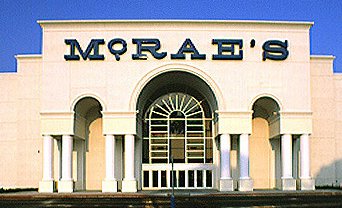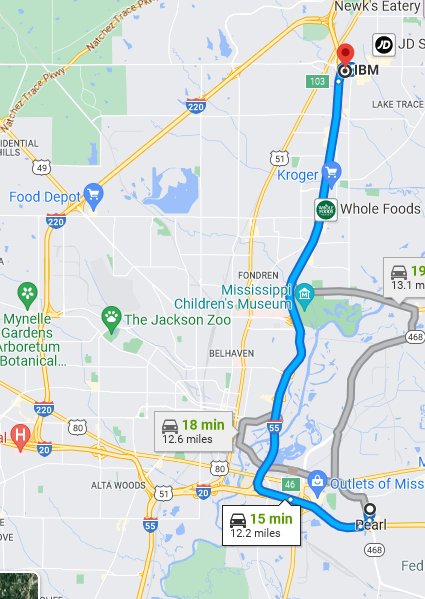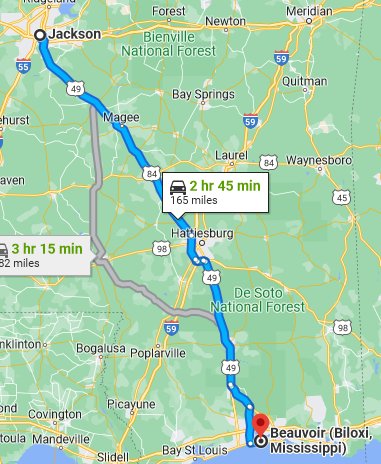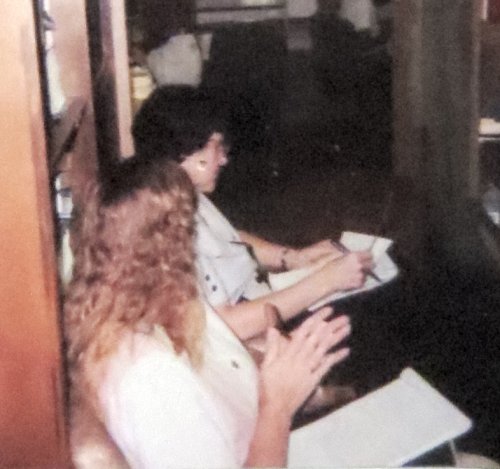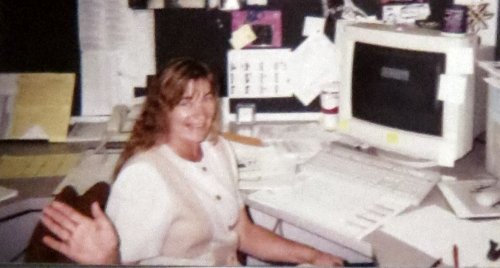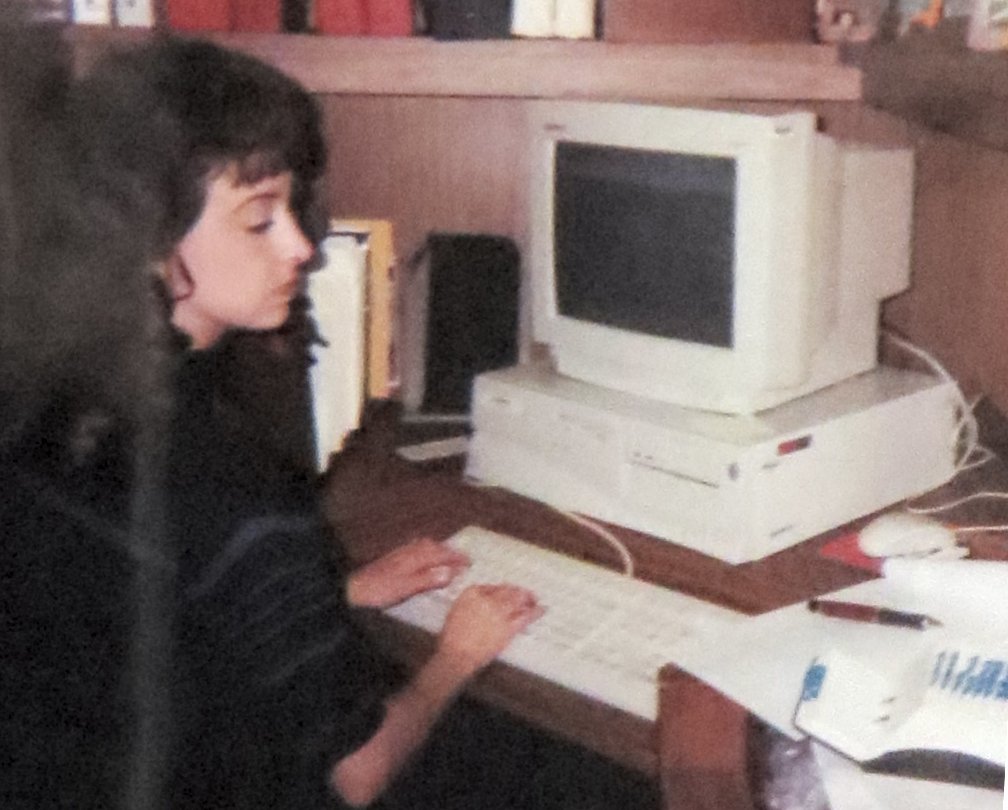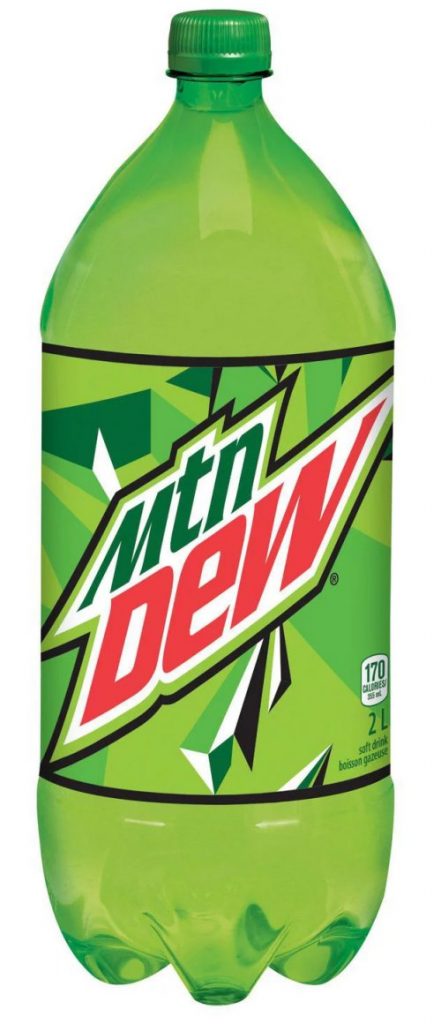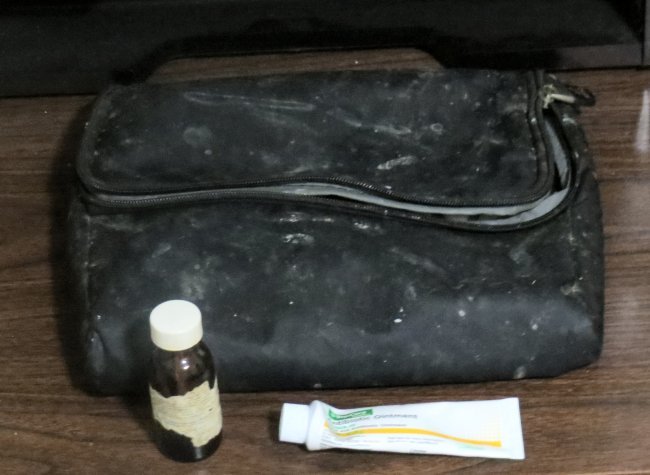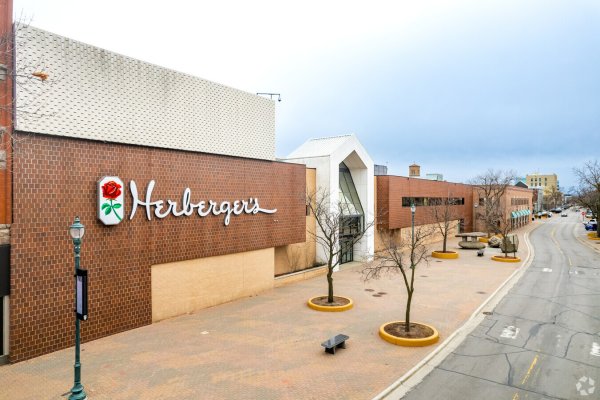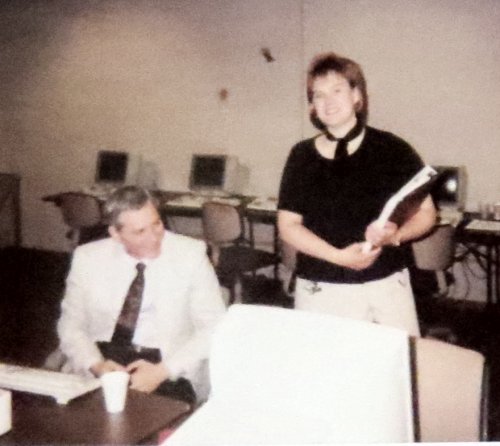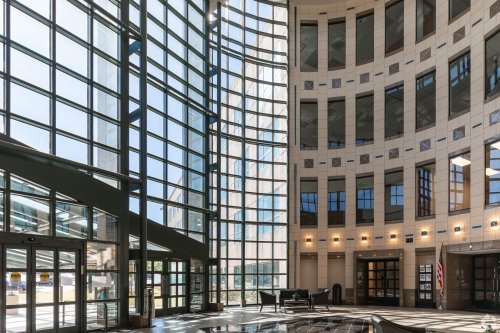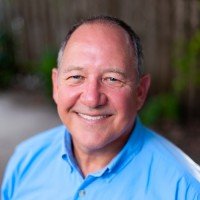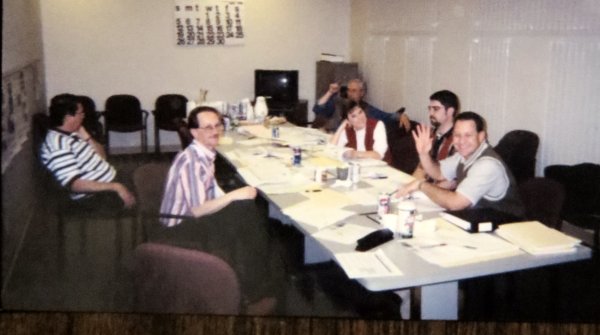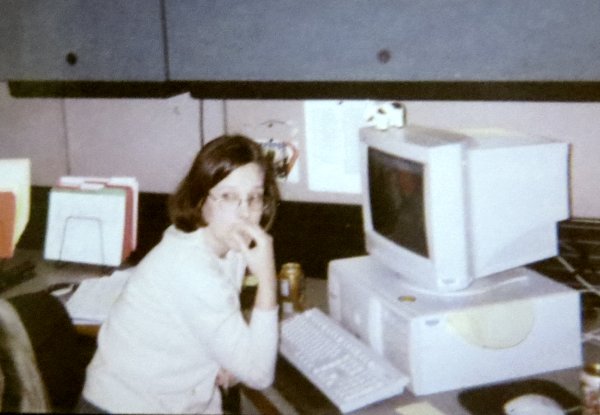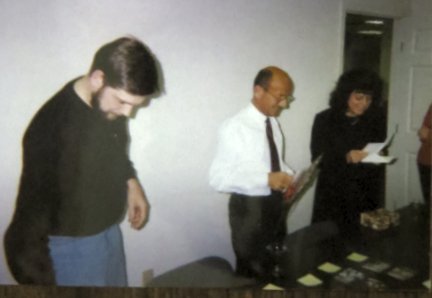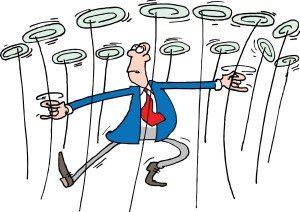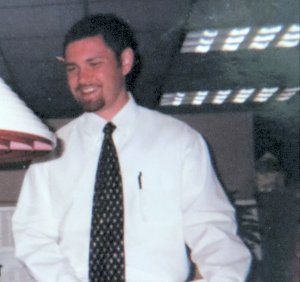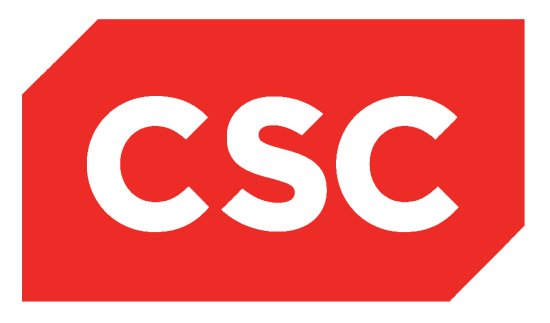Saks Inc. division merged into Proffitt’s. Continue reading
McRae’s was a chain of department stores based in Jackson, MS. In 1994 the stores were acquired as a division of Proffitt’s,but the stores retained the original logo and were administrative from the headquarters in Jackson. Either the Senior VP, whose name was Oscar, or Marianne Jonas, the Advertising Director, got in touch with Doug Pease1, TSI’s Marketing Director. They were interested in TSI’s AdDept software system. Doug made the arrangements for a two-day visit.
Doug and I flew to Jackson, rented a car, and met with Oscar, Marianne, and a few other people in McRae’s advertising department. It was located not on a high floor of one of their stores but in a very large single-story structure immediately off of Highway (NOT “Route”) 80 on the southeast side of Jackson. It had a very large elegant lobby and a curious lack of open space anywhere else. There were a large number of walled-in areas. The corridors between them all ran north-south or east-west. It reminded me of a maze created for rodents.
At the end of the day spent gathering information about how they did business I asked Oscar for advice on how we should drive to the IBM office on the following morning. We were staying at a Holiday Inn or Hampton Inn in Pearl, which is just south of the airport. He outlined a route that, by my offhand calculation, would take us at least ten miles out of our way on a journey that was scarcely more than that in total. I asked him why we could not just go up I-55. He depicted that route as being “too congested”.
I was doing the driving. I informed Doug that we were going to ignore Oscar’s advice. I used the map that Avis provided to plan a simple route that took us north on I-55 until we came to the exit. To our surprise IBM’s office building was actually right on the exit ramp. It would have been almost impossible for us to find it if we had been coming from the north as Oscar suggested. Yes, there was a modicum of “congestion”. I had to brake a couple of times, but, believe me, driving in Jackson was much easier than navigating Boston’s snake nest of roads.
On the first visit Doug and I somehow had a free day after the presentation. We drove down to Jefferson Davis’s home, which is in Biloxi (pronounced BLUX ee locally) and is called Beauvoir. The drive down to Biloxi was stunning. I could not believe all of the rundown trailers and shacks that were visible from the highway.
The mansion itself was nothing special. There was an incredibly large tree in the yard that impressed me much more than anything inside,
So, the takeaway from this little journey was that the leader of the rebellion was allowed to spend the rest of his days living in luxury while the people whom he and his fellow plantation owners had enslaved and their descendants were still living in deplorable conditions. This was our welcome to Mississippi.
Oscar and Marianne liked our proposal and signed the contract. When I returned to Jackson to install AdDept I was escorted to the Data Center (in the same building as the Advertising Department) by a guy whose name was Bill Giardina. He pronounced it Gar DEE nah, with a hard G—as if the i was not even there. I really only needed for him to show me where the box and the system console were, but he stayed nearby and distracted me with homespun chatter all day long.
One evening Doug and I attended a minor league baseball game, probably on the installation trip. The Jackson Generals2 played a seven-inning game at their nice little stadium. I don’t remember the score or the opponents or even who won, but I do remember that we had a very nice relaxing time.
I remember only a little of what TSI needed to code for McRae’s. Oscar had an advertising schedule that he had devised on his PC. We had to produce the same data in roughly the same format. I don’t recall it being exceptionally difficult. We also needed to create an interface between AdDept’s expense and co-op programs and the corporate accounting system that was called Walker.
At Marianne’s insistence I trained two people from the IT department on how to check the backup to make sure that all the important libraries made it to tape every night. I don’t remember whether I tried to talk her out of entrusting people outside of her department with the responsibility for assuring the integrity of the backup. This became an important issue at Proffitt’s, as described here.
The people:I took photos of three people at McRae’s: Marianne, Melba Willis, her right-hand person, and Ivy Klaras3, who managed the accounting area. I don’t remember too much about Melba or Ivy.
I worked closely with Marianne both in Jackson and later at Proffitt’s in Alcoa TN. She was intelligent and a hard worker, a combination that I did not often encounter in the business that I dealt with in the South. She was also a big fan of the University of Alabama’s football team.
I got along pretty well with all of the people at McRae’s. This is what I reported in November of 1999:
I don’t like Jackson, but I like the people at McRae’s. I am even warming up to Ivy. This is the only division that is putting in a real effort to take advantage of as many aspects of the system as possible. They are printing claims4 in all media except broadcast. I made a few adjustments to the broadcast claims today. Tomorrow we will print broadcast claims.

Life in Jackson: I have a lot of memories of Jackson. Most of them make me chuckle when they pass through my consciousness, but I never enjoyed my time there. My strategy for dealing with this very strange place was to leave the word “why” at home.
The drive to the Jackson airport was ridiculous. It was quite close to the city center, but unless you were a bird or had a jet pack, you had to drive several miles south to I-20, exit after a few miles, and then drive back north to the airport. At the end of the exit was a stop sign. From there you were forced to cross two lanes of southbound traffic (with no stop sign) to reach a roadway large enough for only one car in the median. From there one had to attempt to merge in with the traffic in the passing lane of the northbound highway.
Between the exit and the airport was a rotary. In all of the times that I visited Jackson I never saw any cars enter the rotary from the east or west.
When I was in the South I often went to Cracker Barrel for supper. I always ordered the same thing: pot roast with green beans and unsweetened iced tea. In Jackson the waitress came up to my table and greeted me with “How are y’all doin’?” Her pencil was poised over her pad.
I responded., “Fine. I’d like the pot roast with green beans and a large unsweetened iced tea.”
Her pencil was motionless. Instead she ventured this evaluation. “You’re not from around here, are you?”
I drove to Kmart one evening. This was before the advent of self-checkout machines. I was in line for a cashier; behind me was a young black woman with her son who was perhaps eight or nine. He tugged on my jacket and said, “Mister, if you were my daddy, would you let me have a Mountain Dew?”
I immediately responded, “Absolutely not. It’s full of sugar and caffeine!” It later occurred to me that that would probably be the last time ever that someone his age might think of me as a potential daddy rather than a granddaddy.
One evening I was at the Jackson airport a bit late for my flight to Atlanta. I checked in and rushed to the gate. To my joy and relief there was absolutely no line at security! I put my briefcase on the treadmill without taking out my computer. The one person on duty let me through. I barely made the plane, but it was even more surprising that I saw them load my suitcase into the cargo hold as well.
After security got so much tighter after 9/11, I often thought how easy it would have been for me to have hidden a gun beneath my laptop.
The worst moment that I had in Jackson came when I was eating lunch with Josh Hill from Proffitt’s Marketing Group. I think that I was eating a turkey sandwich when the thing on the left side of my lower lip started to bleed. I don’t remember if I had my bottle of New-Skin with me. I do recall that I spent the rest of the lunch break in the men’s room until Old Faithful finally blew itself out.
Epilogue: In 2000 the administration of the McRae’s and Proffitt’s stores was consolidated. The accounting and data processing functions remained in the building on Highway 80. Most other functions were transferred to the Proffitt’s headquarters in Alcoa, TN. Marianne Jonas moved to Proffitt’s, where she was the Advertising Director. I don’t think that anyone else with whom I worked in Jackson made the transition to Alcoa.
The story of the AdDept installation at Proffitt’s is posted here.
1. Much more about Doug can be read here and in many of the entries for other AdDept clients.
2. The team name was voted on by the citizens of Jackson. They picked “Generals” to honor the person after whom the town was named, Andrew Jackson. Why they chose Generals over Presidents is a stumper. Jackson’s greatest military victory was the Battle of New Orleans, which actually occurred after the war was over. He had two full terms as president and strongly influenced American history in that role.
Although some sites on the Internet state that the Generals began playing in 1998, the statistics for the team in 1996 can be found here. I was astounded to discover that a factory-sealed complete set of the baseball cards for the 1996 team could in 2023 be purchased on Ebay for only $7.95. I was tempted to buy the one remaining set as a present for Doug. The site is (or at least was) here.
3. Ivy Klaras died in 2017 at the age of 52. Her obituary is posted here.
4. Claims are the documents that advertising sends to the merchandise people to show the amount of money they must collect from their vendors for cooperative advertising.

